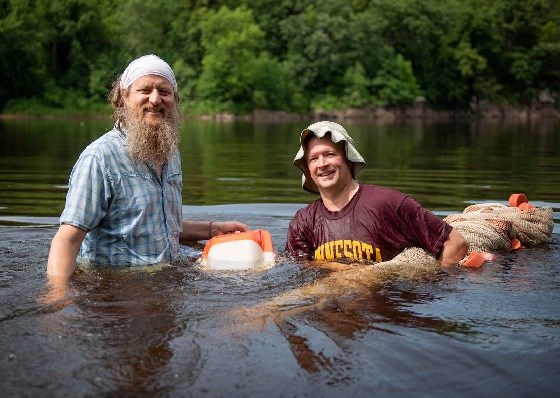
Denis Zerwas
Female freshwater mussels brood eggs in their modified gills. The eggs grow there and develop into tiny bivalved larvae, called glochidia. Glochidia must then attach to the gills or fins of particular fish species to complete their development. Not all fish are suitable, and Hove and his crew of enthusiastic assistants conducted an experiment to identify which fish species could serve as suitable hosts.
Previous research suggested that minnows might be suitable, and Hove’s research team sought to determine which minnow species would work. The Wabash Pigtoes and minnows they caught were transported to aquaria at the University of Minnesota Twin Cities. St. Croix River minnows were placed in aquaria to collect naturally attached mussel species. Wabash Pigtoes were held in aquaria until they released their glochidia. Glochidia were then placed together with various fish species in the laboratory to see if they would attach to the fish and metamorphose into juvenile Wabash Pigtoe. Glochidia attached and transformed into juveniles on all 3 of the laboratory inoculated minnow species. The team continued their work and determined that two killifishes could also serve as hosts! An article about their discoveries was published in the newsletter of the Freshwater Mollusk Conservation Society! This information is useful to hatchery managers trying to raise Wabash Pigtoe for stocking efforts.
During the investigation, Mark Hove was particularly struck by how generous people are with their time. The Master Naturalists, a high school robotics class, and even park visitors who encountered them at boat ramps all wanted to help him (and one another) with the project. It left everyone with a great feeling!
Last updated: September 29, 2021
